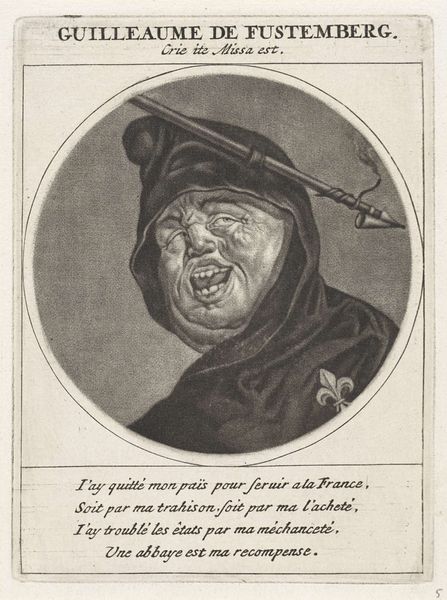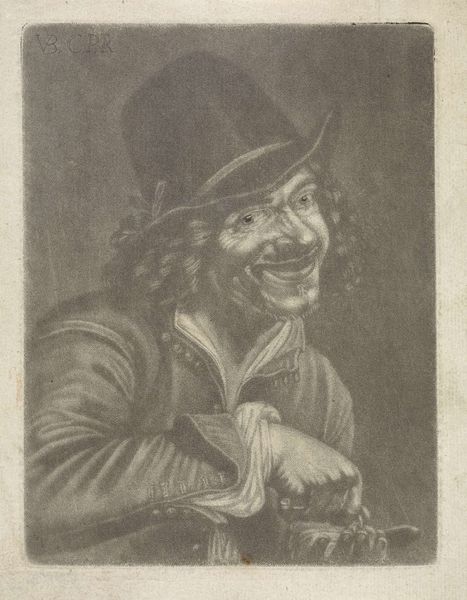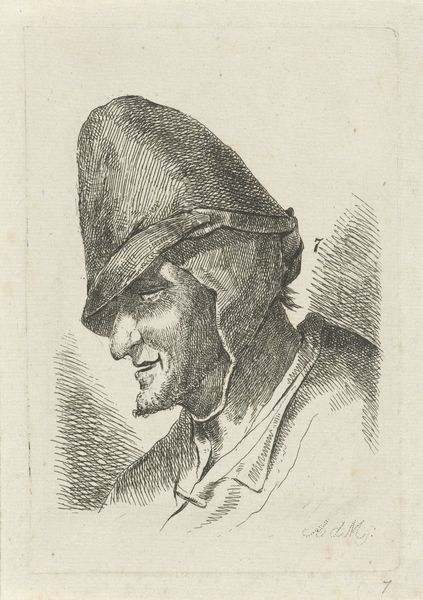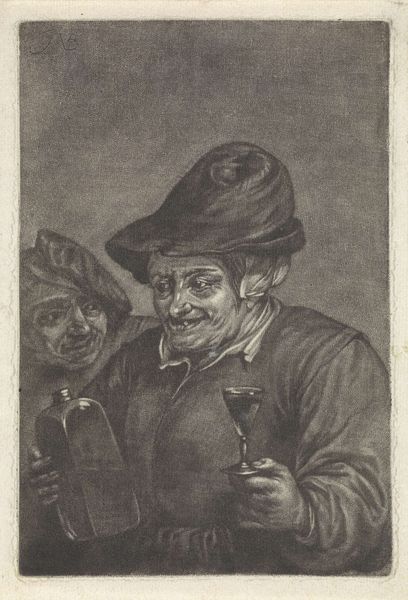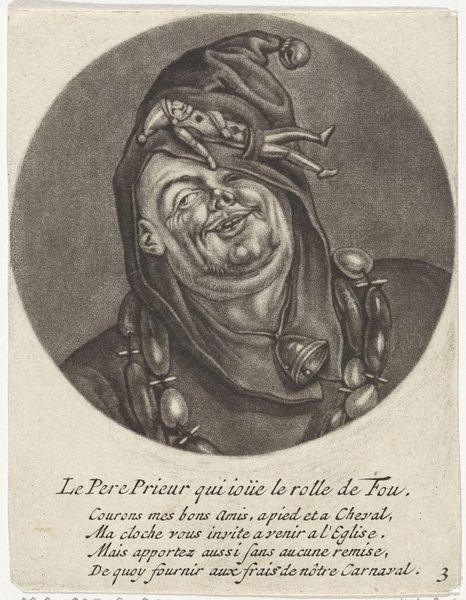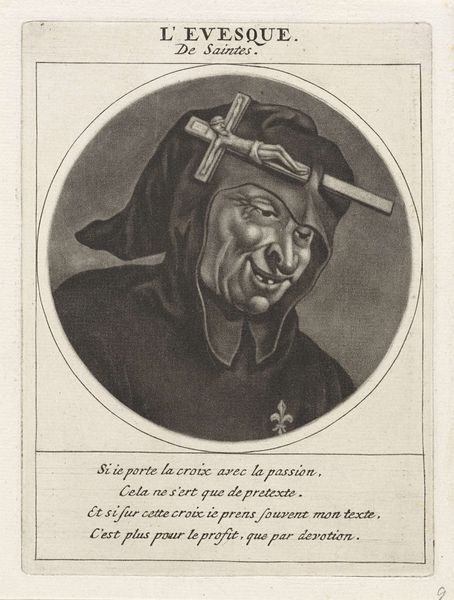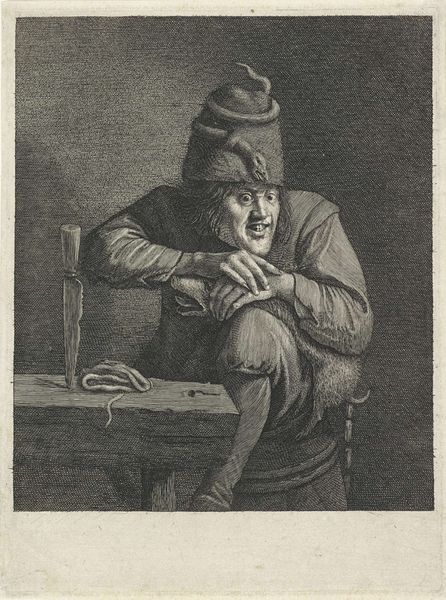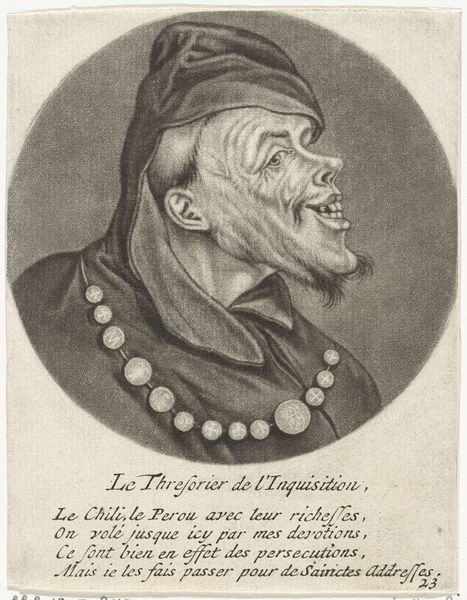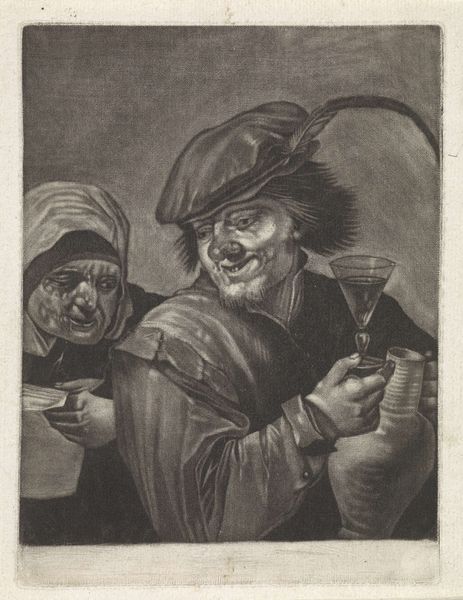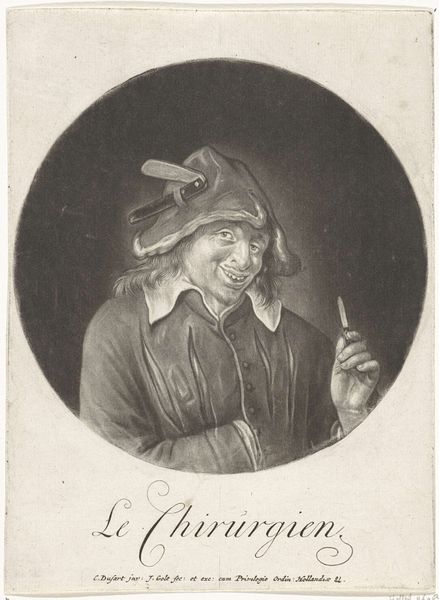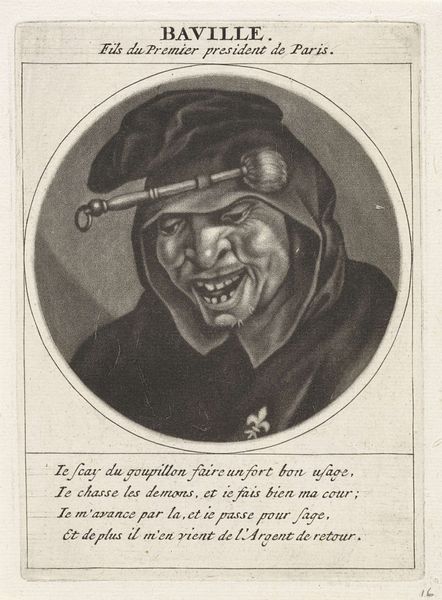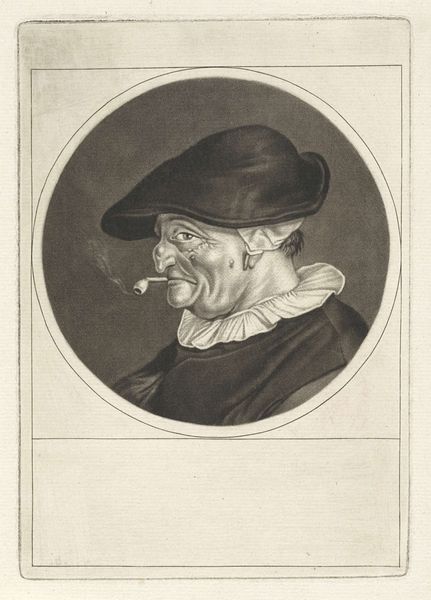
print, engraving
#
portrait
#
baroque
# print
#
caricature
#
old engraving style
#
traditional media
#
archive photography
#
engraving
Dimensions: height 146 mm, width 107 mm
Copyright: Rijks Museum: Open Domain
Curator: This is Jacob Gole’s "Portret van de bisschop van Meaux," an engraving from 1691, currently held at the Rijksmuseum. It’s… striking, wouldn’t you agree? Editor: Striking is one word for it! The artist chose to depict the Bishop in such an unflattering way, focusing on details that are typically not considered flattering. It seems…satirical. What do you make of the visual choices here? Curator: Absolutely. This isn't just a portrait; it’s a political statement disguised as one. Gole is not simply capturing a likeness. We need to consider the subject’s role within the Catholic League. This was a period of intense religious conflict and power struggles. That lily, could that allude to royal power in contrast to the Catholic league? What do you make of his physical appearance? Editor: His exaggerated features are very memorable. Is that simply Gole's personal opinion of the Bishop, or commentary of a specific group during the Baroque? Curator: I'd say it’s both. The caricature itself would be deployed to diminish the Bishop's authority and by extension the power of the Catholic League. In those historical contexts, these prints became powerful weapons. What effect does that realization have on your viewing of this work? Editor: It’s less about the individual and more about the bigger societal conflicts. Suddenly, the print’s role shifts from observation to weaponization, to me at least. Curator: Exactly. The visual language of caricature, the accessibility of printmaking - these were tools for shaping public opinion, amplifying existing tensions along social, political and religious lines. So, a piece like this reminds us that art isn't created in a vacuum. It can actively participate in these historical contexts. Editor: It makes me want to delve deeper into the dynamics between religious factions in the Baroque era, and the power of prints at that time. Curator: Precisely. Art as a primary source, a lens through which we can better understand complex power dynamics.
Comments
No comments
Be the first to comment and join the conversation on the ultimate creative platform.
